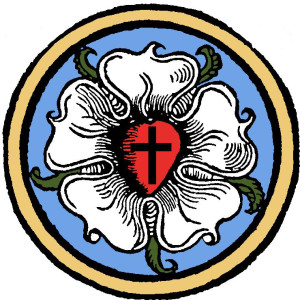
- Podcast Features
-
Monetization
-
Ads Marketplace
Join Ads Marketplace to earn through podcast sponsorships.
-
PodAds
Manage your ads with dynamic ad insertion capability.
-
Apple Podcasts Subscriptions Integration
Monetize with Apple Podcasts Subscriptions via Podbean.
-
Live Streaming
Earn rewards and recurring income from Fan Club membership.
-
Ads Marketplace
- Podbean App
-
Help and Support
-
Help Center
Get the answers and support you need.
-
Podbean Academy
Resources and guides to launch, grow, and monetize podcast.
-
Podbean Blog
Stay updated with the latest podcasting tips and trends.
-
What’s New
Check out our newest and recently released features!
-
Podcasting Smarter
Podcast interviews, best practices, and helpful tips.
-
Help Center
-
Popular Topics
-
How to Start a Podcast
The step-by-step guide to start your own podcast.
-
How to Start a Live Podcast
Create the best live podcast and engage your audience.
-
How to Monetize a Podcast
Tips on making the decision to monetize your podcast.
-
How to Promote Your Podcast
The best ways to get more eyes and ears on your podcast.
-
Podcast Advertising 101
Everything you need to know about podcast advertising.
-
Mobile Podcast Recording Guide
The ultimate guide to recording a podcast on your phone.
-
How to Use Group Recording
Steps to set up and use group recording in the Podbean app.
-
How to Start a Podcast
-
Podcasting
- Podcast Features
-
Monetization
-
Ads Marketplace
Join Ads Marketplace to earn through podcast sponsorships.
-
PodAds
Manage your ads with dynamic ad insertion capability.
-
Apple Podcasts Subscriptions Integration
Monetize with Apple Podcasts Subscriptions via Podbean.
-
Live Streaming
Earn rewards and recurring income from Fan Club membership.
-
Ads Marketplace
- Podbean App
- Advertisers
- Enterprise
- Pricing
-
Resources
-
Help and Support
-
Help Center
Get the answers and support you need.
-
Podbean Academy
Resources and guides to launch, grow, and monetize podcast.
-
Podbean Blog
Stay updated with the latest podcasting tips and trends.
-
What’s New
Check out our newest and recently released features!
-
Podcasting Smarter
Podcast interviews, best practices, and helpful tips.
-
Help Center
-
Popular Topics
-
How to Start a Podcast
The step-by-step guide to start your own podcast.
-
How to Start a Live Podcast
Create the best live podcast and engage your audience.
-
How to Monetize a Podcast
Tips on making the decision to monetize your podcast.
-
How to Promote Your Podcast
The best ways to get more eyes and ears on your podcast.
-
Podcast Advertising 101
Everything you need to know about podcast advertising.
-
Mobile Podcast Recording Guide
The ultimate guide to recording a podcast on your phone.
-
How to Use Group Recording
Steps to set up and use group recording in the Podbean app.
-
How to Start a Podcast
-
Help and Support
- Discover

Now we hear, in Mark 15:40, of some of the women “looking on from a distance” at the death of Jesus, probably because they were not allowed to be any closer. There was Mary Magdalene, of whom Luke tells us that Jesus had cast out seven demons. See Luke 8:1-3, where she and other women are mentioned who had been healed by Jesus.
Another Mary was also watching the crucifixion - Mary, the mother of James the younger (another of the 12 disciples) and Joses. Salome, the wife of Zebedee and mother of two of the other disciples, James and John, was also there. They and other women had become followers of Jesus and helped support Him and His disciples and came also to Jerusalem with Him for the Passover celebration (Mark 15:41).
They knew that Jesus had now died and watched closely to see what would happen to His body, as they hoped to be able to have a chance to anoint His body with spices, as was the Jewish custom (Mark 15:47, 16:1). Actually, as we heard earlier, another Mary, the sister of Lazarus and Martha, had already anointed the body of Jesus before His death, in Mark 14:3-9. Jesus said of her: “She has done what she could. She has anointed My body.”
Two men, who had been attracted to Jesus but had not been willing to admit it in a public way, now stepped forward to help take care of His body. Mark tells us of Joseph of Arimathea, who was “respected” (the Greek word suggests that he had both wealth and high standing among the Jews) and was also a member of the Sanhedrin, the Jewish Council that had condemned Jesus to die. This Joseph had been “looking for the Kingdom of God” to come (see Mark 1:14-15) and may have hoped that Jesus might be the promised Messiah. John’s Gospel also tells us of Nicodemus, who had come secretly at night to talk with Jesus (John 3:1-10) and was also a member of the Council. Both men, now that Jesus was dead, “took courage” enough to want to help out with His burial. Unclaimed bodies were just thrown away in unmarked places. That is likely what happened to the two robbers’ bodies.
Joseph of Arimathea went, though, to Pontius Pilate to ask for the body of Jesus. Pilate was surprised that Jesus was already dead and called the centurion to testify that Jesus was actually dead. The centurion knew that Jesus was dead and also knew of the spear that was thrust into Jesus’ side so that they could be absolutely certain of His death. (See John 19:32-36.) Only then did Pilate release the “corpse” to Joseph (Mark 15:43-45).
The fact that Jesus was certified to be dead was important, as later on, after the resurrection of Jesus, Jewish authorities and others tried to start rumors that the body of Jesus was stolen or maybe that Jesus had not really died, but was only revived by His disciples. See Matthew 28:11-15, for example. Such stories are still told today by some who want to deny the physical resurrection of Jesus from the dead.
Jesus was dead; so Joseph, aided by Nicodemus (John 19:38-42), took down the body of Jesus, wrapped it in strips of linen cloth, into which spices provided by Nicodemus had been put, and laid the body in a new tomb nearby that he (Joseph) had prepared for himself or family members. This also fulfilled prophecy that the grave of the Messiah, of Jesus, would be “with a rich man in His death” (Isaiah 53:9). Joseph was that rich man, and he made sure that the grave was then properly closed with a “very large stone” (Mark 15:46 and 16:4). All this had to be done quickly, though. Jesus had died around 3 pm, and Jews were allowed to do no work after sundown that Friday, when the Jewish Sabbath, the day of rest, would begin.
The Sabbath lasted from sundown Friday until sundown on Saturday. Only after that could the women, who had hoped to anoint Jesus’ body itself, buy and prepare what they needed for the anointing. Mark mentions the two Marys and Salome. There was also Joanna and likely some other women who came to help, too. (See Luke 8:3 and 24:10.)
They came just after sunrise on what we now call Easter Sunday. They had been worrying about how they could get the huge stone rolled away from the entrance of the tomb; but when they arrived, they found the stone already “rolled back” from the entrance (Mark 16:1-4). When they entered the tomb, they found “a young man in a white robe” sitting there.
They were alarmed, but the person, clearly an angel, (angels do not have physical bodies, but this is how they often appear in Scripture), reassured them. They were seeking the crucified body of Jesus of Nazareth. Instead, the angel gave them the wondrous news, “He has risen. He is not here.” The women could see for themselves that the tomb was empty and that there was no longer a body where Jesus had been placed. (Mark just gives the simple fact - Jesus has risen! Mark does not give details that some of the other Gospel writers were inspired to include. He sticks with the basics, as he had done throughout the Gospel of Mark. Jesus had clearly died, and Jesus had clearly risen from the dead. It was a bodily resurrection, too, not just some sort of spiritual resurrection, as some people later tried and still try to claim.)
The women now had a very important job to do - to tell the Good News of the risen, living Lord Jesus. They were to tell the disciples and Peter first. Peter is specifically mentioned, probably to assure him that he was still loved and forgiven by Jesus, even though he had failed Jesus so miserably, in denying Him three times. Remember that Peter was especially helpful to Mark in writing this Gospel with such information, as the Holy Spirit inspired them to do. The angel also gave a promise to give to the disciples and others. Jesus “is going before you to Galilee. There you will see Him, just as He told you” (Mark 16:6-7). Jesus had predicted this Himself in Mark 14:28; and He tells this again in Matthew 28:10, after His resurrection.
The women then quickly left the tomb. They were shaken up by what they had seen and heard and by the appearance of the angel, as well, as people often were in the Scriptures. “Trembling and astonishment had seized them,” along with “fear." (From the Greek word for “astonishment” we get the English word “ecstasy.") The women were also amazed and stunned and joyful that Jesus was really alive. At first, “they said nothing to anyone," Mark tells us. But soon, as Jesus Himself appeared to some of them and strengthened them, they were able to share this Good News, as other Gospels tell us (Mark 16:8).
We will talk more about this next week, but at this point, most of your Bibles, other than the King James version, will have a note, indicating that some of the earliest manuscripts of Mark stop as this point and do not include Mark 16:9-20. (The King James Version was translated and published before some of these ancient manuscripts were even discovered by Biblical scholars. The King James used a long recognized “received text” that did not have and thus did not use these undiscovered texts.)
That raises the question of whether they were originally in what Mark wrote or were added later. If there were things in Mark 16:9-20 that contradicted other Scriptures, or could not be found in other Scriptures, then that would create problems. However, the Good News is that everything in these verses can also be found and supported in other Bible passages. Therefore, we will study those verses next week, too, and give other reasons for why these words are reliable for us.
One last comment. If Mark’s Gospel did end with Mark 16:8, why would he end so abruptly? We do not know; but some think Mark is saying, in effect, that Jesus did really die and rise again. That is certain. But what ending will be put on this Gospel for you? Will you, by the grace of God, believe that Good News for yourself? That is what God wishes and can do and will do by His grace and His Spirit and His effective Word for you, too. This is all Good News for you, too, and to be shared with others, as well. God “wants all to be saved and to come to the knowledge of the truth” (1 Timothy 2:4).
More Episodes
 2025-02-01
2025-02-01
 3
3
 2025-02-01
2025-02-01
 5
5
 2025-01-20
2025-01-20
 8
8
 2025-01-17
2025-01-17
 6
6
 2025-01-10
2025-01-10
 6
6
 2025-01-03
2025-01-03
 8
8
 2024-12-25
2024-12-25
 9
9
 2024-12-20
2024-12-20
 6
6
 2024-12-16
2024-12-16
 9
9
 2024-12-12
2024-12-12
 9
9
 2024-12-05
2024-12-05
 7
7
 2024-11-30
2024-11-30
 6
6
 2024-11-22
2024-11-22
 4
4
 2024-11-12
2024-11-12
 4
4
 2024-11-06
2024-11-06
 4
4
 2024-11-06
2024-11-06
 3
3
 2024-11-06
2024-11-06
 3
3
 2024-11-01
2024-11-01
 8
8
 2024-10-22
2024-10-22
 6
6
 2024-10-22
2024-10-22
 3
3
Create your
podcast in
minutes
- Full-featured podcast site
- Unlimited storage and bandwidth
- Comprehensive podcast stats
- Distribute to Apple Podcasts, Spotify, and more
- Make money with your podcast
It is Free
- Privacy Policy
- Cookie Policy
- Terms of Use
- Consent Preferences
- Copyright © 2015-2025 Podbean.com





